AREA SETUP
(Open thematic poster-Squirrels) Print, laminate, and display all kinds of posters.
Educa-decorate-Squirrels
(Open educa-decorate-Squirrels) Print, cut out, and laminate. Use the items to decorate the walls of your daycare and set the mood for the theme.
Garland-Squirrels
(Open models-Squirrels) Print. Let children decorate the garland. Cut it out and hang it within your daycare or near your daycare entrance.
Educa-theme-Squirrels
(Open educa-theme-Squirrels) Print and laminate the items that represent the theme. Use them to present the theme to your group (and parents) while decorating your daycare.
Stickers-Squirrels
(Open stickers-Squirrels) Print the illustrations on adhesive paper. Cut out the items and use the stickers to reward children.
Group identification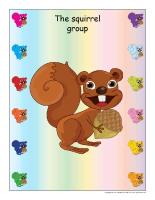
The following special tool was created in response to a special request received. (Open group identification-Squirrels) Print and use the items to identify children's belongings and decorate your daycare.
SPECIAL TOOL
This special tool was created in response to a special request received. (Open binder covers-Photo albums) Print the covers and stick them on binders to turn them into photo albums.
CIRCLE TIME
Animated discussion-Squirrels
(Open picture game-Squirrels) Print and laminate the pictures in the format you prefer. Use them to spark a conversation with your group. Ask children questions to see what they know about squirrels.
Poni discovers and presents-Squirrels
(Open Poni discovers and presents-Squirrels) Print and laminate the posters. Use your Poni puppet or another puppet children are familiar with to present the pictures to your group. Invite each child to bring a stuffed animal, a book, a figurine, or a toy related to the theme to daycare. Set all the objects in the middle of your circle time area and present them to your group one at a time. Use the items to encourage children to talk about squirrels.
Suggested questions: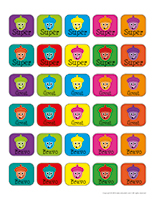
- Do you know any stories about squirrels?
- Do squirrels have fur or feathers?
- Where do squirrels live?
- What do squirrels eat?
- How many legs do squirrels have?
- Have you ever seen a squirrel?
- Can you name a squirrel's body parts?
PICTURE GAME
(Open picture game-Squirrels) Use the pictures to decorate your daycare or to spark a conversation with your group. Print, laminate, and store the pictures in a Ziploc bag or in your thematic bin.
Memory game-Squirrels
(Open picture game-Squirrels) Print the pictures twice and use them for a traditional memory game.
ACTIVITY SHEETS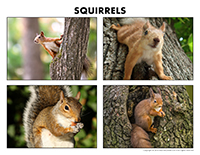
(Open activity sheets-Squirrels) Print and follow instructions.
Educa-spots-Squirrels
(Open educa-spots-Squirrels) Print for each child. Use bingo markers to color inside the spots. If you don't have bingo markers, you may simply invite children to deposit dry cereal (Cheerios) or stickers inside the spots.
WRITING ACTIVITIES
(Open writing activities-S like squirrel) Print for each child or laminate for use with a dry-erase marker. Print and laminate several different activity sheets and writing activities. Arrange them in a binder and set it on a table with dry-erase markers. Invite children to complete the activities in the binder during free play. The use of dry-erase markers will make using the sheets over and over again possible.
If you wish, you may also arrange laminated activity sheets and writing activities on your daycare walls, on the floor, under tables, etc. Children will experiment various positions.
Educa-nuudles-Squirrels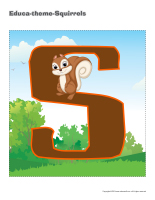
(Open educa-nuudles-Squirrels) Print for each child. Have children color the sheet. Once they are done, they may use Magic Nuudles to turn the coloring pages into three- dimensional works of art. Variation: If you do not have Magic Nuudles, ask children to fill the spaces designed for Magic Nuudles with bingo markers or stickers. To order Magic Nuudles.
VARIOUS WORKSHOPS-Squirrels
Different tools designed to help make planning workshops easier are available in the educatall club.
For activity planning: (Open workshop planning booklet) Print.
For workshop organization: (Open workshop follow-up booklet) Print.
For workshop identification: (Open posters-workshops) Print.
Construction/Building blocks:
- Natural-coloured wooden blocks (or coloured ones).
- A few branches and pinecones.
- Tiny logs.
- Wooden sticks of all kinds that can be used for different types of constructions.
- Forest animal figurines.
Arts & crafts: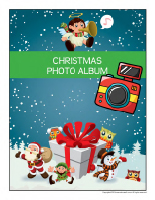
- Cardboard, tissue paper, empty egg cartons, recycled material, etc. Children can use them to represent a cabin in the woods.
- Hang a large piece of paper on a wall to create a mural. You can inspire children by drawing a few trees and letting them add leaves, animals, etc.
- A tree drawing printed on paper and children have to glue leaves and bark on it (torn pieces of green and brown construction paper). Glue sticks are best for this activity since liquid glue might seep through the paper.
- An easel with a large piece of paper (or paper on a wall) along with poster paint. Children can paint a forest.
- Popsicle sticks and white glue for building a log cabin.
- Discuss animal tracks with your group, apply paint to the bottom of children's feet, and invite them to walk on paper. Once the paint is dry, encourage them to compare their footprints.
- A piece of waxed paper and white glue children can use to draw a spider web. Once the glue is dry, they can peel the web off the waxed paper and hang it.
- Discuss forest fires as you explore orange and yellow paint.
Drawing:
- Coloring pages related to forest animals, nature, birds, etc.
- Musical drawing: draw a forest as you listen to a CD of forest-related sounds.
- Provide recycled paper for children to draw on and explain the importance of preserving trees!
Role play: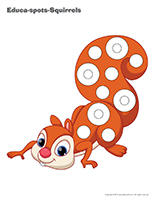
- Picnic:
o A picnic basket filled with plastic dishes and food items, a blanket, a radio with a CD to listen to chirping birds as you pretend to have a picnic in the forest. This activity can be organized at lunch or snack time. Simply sit on blanket on the floor, in your daycare.
- Camping in the forest:
o A tent, sleeping bags, utensils, plastic or disposable dishes, plastic food items, pyjamas, etc.
- No matter which theme you choose, decorate your area with giant paper trees, pictures of forests found in old calendars, fabric leaves, etc. The goal is literally to transform your area to make it look like a forest.
Manipulation:
- Forest animal-themed memory game with educatall picture game or a store-bought game.
- Puzzles related to the theme.
- Brown and green modeling dough to create a forest. If you wish, you can use homemade modeling dough and leave children's creations out to dry. They will enjoy building their very own miniature forest with the trees and animals.
- Fabric leaves that can be sorted by color, size, shape, etc.
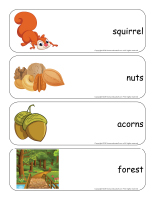
- A felt board with felt trees, animals, etc. that can be used to invent stories and scenes.
- A variety of pre-cut mushroom shapes on which you have glued theme-related pictures for a unique memory game.
- An association game in which children must associate animals to the correct habitat.
- Set a variety of items related to the theme on a table (acorn, pinecone, squirrel figurine, pine needle, etc.). Ask children to observe the items closely. Cover them with a blanket and remove one item. Children must identify the missing item.
- Pieces of rope children can use to tie knots.
- Sorting game involving animals with fur and animal with feathers.
Pre-reading:
- Books about forest animals.
- Tales and fables with a forest setting: The Three Little Pigs, Little Red Riding Hood, Snow White and the Seven Dwarves, Hansel and Gretel, etc.
- Headphones and CDs with sounds of nature, chirping birds, animal sounds, etc.
- Puppets representing forest animals and birds.
Pre-writing:
- Connect the dots or dotted lines children can trace to reveal trees.
- Games with educatall.com word flashcards.
- Tracing activities that involve forest animal names. Associate pictures to each word to help children identify them.
- Various activity sheets related to the theme.
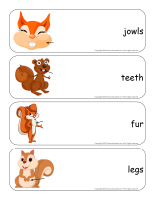
Motor skills:
- An obstacle course throughout which children are encouraged to move like different forest animals.
- A treasure hunt where children must find pictures of forest animals.
- Try to whistle like a bird.
- Act out different actions associated with forest animals or insects.
- Pretend you are firefighters extinguishing a forest fire. Have children stand in line and pass a bucket filled with water down the chain, attempting to have as much water as possible in the bucket when it reaches the end of the line.
- Sing songs alongside a pretend campfire and explain the importance of properly extinguishing a campfire to avoid causing a forest fire.
Sensory bins:
- Sandbox.
- A large container filled with dirt.
- A container filled with pine needles.
- A bin filled with pinecones.
- A large container filled with autumn leaves (real or fabric).
- A container filled with sunflower seeds.
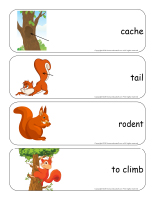
Kitchen:
- As a group, prepare a fruit salad with different types of fruit that grow in trees (pears, apples, plums, pineapples, etc.).
- Let children cut mushrooms (white and brown) into tiny pieces and mix them with sour cream or plain yogurt to prepare a dip that can be served at lunch or snack time with a veggie platter.
- Prepare a recipe with berries that can be found in the forest.
- Prepare your own trail mix by mixing seeds, nuts, and dried fruit. Explain how this simple snack is great for hikes in the forest since it provides energy.
Science:
- Fill a large container with leaves, pieces of bark, branches from coniferous trees, and pinecones.
- Arrange different types of mushrooms in clear containers and invite children to observe them.
- Have children use raffia, hay, and pieces of yarn to create nests for birds.
- Set up your very own vivarium and add any insects children find while playing outside to it. Be sure to cover your vivarium to avoid unpleasant surprises.
- Show children a compass, a map, etc.
- Plant flowers and different types of vegetables with your group.
- Build a birdfeeder. There are many simple models to try!
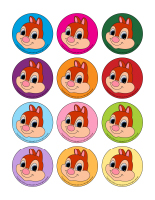 LANGUAGE ACTIVITIES
LANGUAGE ACTIVITIES
Word flashcards
Use the flashcards to spark a conversation with your group, in your reading and writing corner, or to identify your thematic bins. (Open word flashcards-Squirrels) (Open giant word flashcards-Squirrels) Print., squirrel, nuts, acorns, forest, jowls, teeth, fur, legs, cache, tail, rodent, to climb
Let's chat
(Open word flashcards-Squirrels) (Open giant word flashcards-Squirrels) Print and laminate the word flashcards. Have each child pick a flashcard. They can take turns presenting the word they picked to the group. With your group, talk about each item. Ask children questions to encourage them to share what they know about each thing.
Words on a wire
(Open word flashcards-Squirrels) (Open giant word flashcards-Squirrels) Print two copies of several word flashcards. Hang one copy of each flashcard on a clothesline using colourful clothespins. Arrange the other word flashcards in a pile. Let children take turns picking a word flashcard. Help them read their word before inviting them to find the corresponding word flashcard on the clothesline. When they find it, they can place the word flashcard they picked over the word flashcard on the clothesline using the same clothespin. Help younger children manipulate the clothespin if necessary.
Word race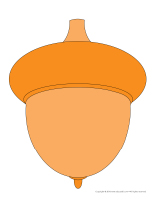
(Open word flashcards-Squirrels) (Open giant word flashcards-Squirrels) Print several word flashcards and hide them throughout your daycare or yard. Divide your group into two teams. When you give them the signal, children must collect as many word flashcards as possible within a predetermined period of time, for example 3 minutes. When the time's up, invite children to join you. In order to earn a point for their team, children must be able to "read" the word flashcards they found. If they are unable to name the correct word, the other team can earn a point if they are able to do so.
ROUTINES AND TRANSITIONS
Game-This is my spot-Squirrels
(Open transition games-Squirrels) Print two copies of each illustration. Use adhesive paper to stick one copy of each illustration on the table. Place the second copy in a bag. Children take turns picking an illustration to determine where they must sit at the table. You may also use the illustrations to determine children's naptime spots or their place in the task train.
My squirrel path
(Open transition games-Squirrels) Print, laminate, and secure the illustrations on the floor of your daycare to create a path leading to the areas frequently visited by children throughout the day. The path can lead to the bathroom, the cloakroom, etc. If you prefer, use the illustrations to delimit various areas.
The squirrel die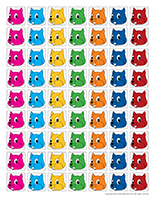
Here is a great way to practice counting skills while being active. Roll a die to determine the number of steps children shall take. Count each step with the children in your group. Roll the die again and keep going.
Roaming squirrels
Arrange pictures of squirrels on the floor. Invite children to hop on the pictures in a variety of different ways: on one foot, on two feet, like a frog etc. Every move helps children build motor skills.
Giant hopscotch game
Use colourful adhesive tape to draw a giant hopscotch grid on the floor. If you wish, it could lead to another room. For example, children could practice hopping, alternating hops on one foot and on two feet on their way to the cloakroom. Add pictures of squirrels in each square.
My squirrel routine
Create a motivational chart related to your theme to encourage children to collaborate. For example, children can stick an acorn on their motivational chart every time they wash their hands.
A squirrel cache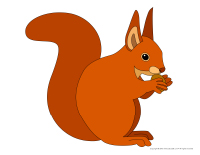
To help children who get dressed very quickly wait patiently for others in the cloakroom, prepare a special squirrel cache filled with simple toys (cars, figurines, miniature drawing board, small doll, etc.). Let children who are dressed manipulate the contents of your squirrel cache while they wait.
PHYSICAL ACTIVITY AND MOTOR SKILLS
Squirrel hunt
(Open miniature squirrels) Print and laminate. Hide the squirrels throughout your daycare and invite children to search for them. The child who finds the most squirrels can hide them for the next round.
Magnetic squirrel family
(Open models-squirrels) Print, color, and laminate the models before gluing them on magnetic paper. Set the magnetic squirrels on a table with a baking sheet. Children will enjoy sticking them on the baking sheet and using them to invent stories.
Follow the squirrel
Children hold hands. They must follow the rhythm and reproduce the actions of the leader (first child in line). The leader can walk very heavily or tiptoe, walk very fast or very slow, pretend to climb a tree, etc.
Squirrel pictures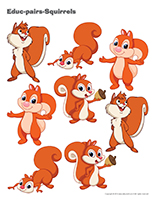
Collect several squirrel pictures and illustrations. Display them throughout your daycare. Use the walls, cupboards, and even the floor. Children will enjoy discovering the pictures as the move about during the day.
I am a squirrel
Set a large blanket on the floor in the middle of your daycare to represent a forest. Ask children to walk all over the blanket like a squirrel.
Big as..., small as...
Divide your group into two teams. Have both teams sit on the floor, facing each other. Ask the first group to name large animals. The other group must name small animals.
Watch out for the squirrel
Select a child who will play the role of a squirrel. The squirrel must chase the other children until he/she touches one. The child who is touched by the squirrel becomes the squirrel for the next round. Variation: The child who is touched by the squirrel can stand still, with his/her arms stretched out. The other children can save him/her by running under one of his/her arms. Several children can be forced to remain still at the same time. You will have to change squirrels often to avoid children getting too tired.
Giant squirrel
Provide several brown and beige building blocks. With your group, stack the blocks one on top of the other to represent a squirrel. Continue until the blocks fall to the ground and start over again.
Squirrel cache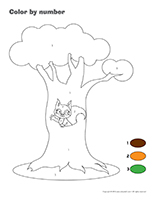
Fill a kiddie pool or large container with leaves (real or fabric). Hide objects among the leaves. When you give the signal, children search for the items. Every time a child finds an object, he/she must deposit it in a special cache, just like a squirrel would do. When all the objects have been found, start over again.
Caches
Arrange several different types and sizes of boxes on the floor within your daycare and let children hide in them, just like a squirrel hides in its cache.
OUTDOOR ACTIVITIES
Words in the sand
(Open word flashcards-Squirrels) (Open giant word flashcards-Squirrels) Print and laminate the word flashcards. Stick each word on the end of a Popsicle stick and poke them in the ground, throughout your yard. Invite children to stand on a line, at one end of your yard. When you give them the signal, they must run to find a word flashcard, grab it, and go to your sandbox where they can "trace" the letters of the word in the sand using a stick (or their finger). Help children if necessary. Younger children can simply stick the word flashcard they found in the sandbox and "read" the word with you. If you wish, you can encourage children to use sand to represent the word. For example, if a child found the word "acorns", he/she could use the sand to create an acorn-like shape. The goal is to give children the opportunity to notice different words. When everyone is done, simply use a small rake to "erase" their work and start over again. Ask children to pick a different word for each round.
Squirrel words in our yard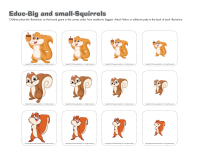
(Open word flashcards-Squirrels) (Open giant word flashcards-Squirrels) Print and laminate the word flashcards associated with the theme. Use chalk to write the words in your yard. Before heading outside with your group, hand each child one or more word flashcard(s). Encourage them to search for the corresponding word(s) in your yard. When they find one, help them "read" the word.
Squirrel tag
One child pretends to be a squirrel and tries to capture the other children. When the squirrel touches another child, he/she tickles him/her. The game continues and the child who was tickled becomes the squirrel.
Squirrel cache
Here are a few squirrel facts. The red squirrel builds its nest in tree branches and cavities. During winter, it eats the foods it carefully collected at the end of summer and during fall. A single cache can contain hundreds of pinecones. Go for a walk in the forest with your group. Give each child an empty tissue box. Encourage them to fill their "cache" with the items they find, just like the red squirrel. Their cache can contain branches, leaves, pinecones, acorns, etc. They can use their findings for crafts and activities throughout the theme.
Nut hunt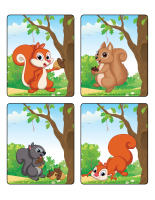
Explain to your group how squirrels collect and hide acorns and nuts and store them so they have plenty to eat during winter months. To demonstrate how difficult finding nuts can be, hide a single acorn within your daycare. The child who finds it can hide it for the next round.
Relaxing in the forest
Invite children to build a bed of leaves in your yard. Encourage them to lie down on it to admire the clouds and listen to the birds, the wind, etc. When you go back inside, they can draw what they saw.
COGNITIVE ACTIVITIES
Educ-pairs-Squirrels
(Open educ-pairs-Squirrels) Print. Children must draw a line between identical items or color identical items using the same color. For durable, eco-friendly use, laminate for use with a dry-erase marker.
Educ-trace-Squirrels
(Open educ-trace-Squirrels) Print for each child. Children must trace the lines with the correct colors and then color the corresponding items using the same colors.
Color by number-Squirrels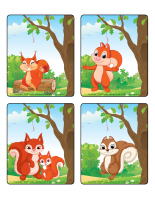
(Open color by number-Squirrels) Print for each child. Children must color the picture according to the color code.
Educ-big and small-Squirrels
(Open educ-big and small-Squirrels) Print and laminate. Children must place the illustrations in the correct order, from smallest to biggest.
Miming words
(Open word flashcards-Squirrels) (Open giant word flashcards-Squirrels) Print and laminate the word flashcards. Deposit several word flashcards in an opaque bag and use them for a mime game. Children can take turns picking a word and using gestures to help their friends guess the word. For example, if a child picks the word "squirrel", he/she can pretend to eat nuts. The child who guesses correctly can be the next one to mime a word.
MUSCIAL AND RHYTHMIC ACTIVITIES
Musical squirrels
(Open transition games-Squirrels) Print, laminate, and secure the squirrel illustrations on the floor of your daycare. To the sound of music, children must move around the room. When the music stops, they must quickly find a squirrel to stand on.
EARLY SCIENCE/EXPLORATION/MANIPULATION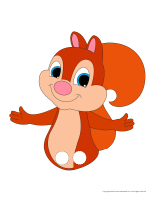
Exploring nuts
***Be sure to ask parents about nut allergies before presenting this activity.*** Show several different types of nuts in their shell to your group. Use a nutcracker to crack the shells open and show children what the nuts look like inside. Magnifying glasses can represent an interesting addition for this activity. Children will enjoy using them to observe the shells and nuts up close. Encourage children to place the nuts in order, from smallest to biggest. They can also sort them from lightest to darkest.
Wood chips
Purchase a large bag of wood chips (for hamster cages) and empty it in a sensory bin. Hide nuts and forest animal figurines in your bin.
Sandbox
Hide nuts in your sandbox or sand table. Children can take turns using a fork to scratch the sand (just like squirrels use their claws) and discover hidden items.
ARTS & CRAFTS
Models-Squirrels
(Open models-Squirrels) Print several copies. Let children decorate their squirrel with a variety of arts & crafts materials (pompoms, glitter, confetti, scraps of paper, etc.).
Finger puppets-Squirrels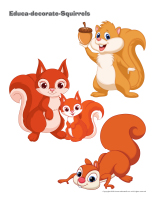
(Open finger puppets-Squirrels) Print the puppets on cardboard. Ask children to cut them out and color them if you have chosen to use the black and white version. Children insert their fingers to move the puppets.
Mandalas-Squirrels
(Open mandalas-Squirrels) Print for each child. Encourage children to color the mandalas to help them relax during the day.
Squirrel hat
(Open educa-decorate-Squirrels) Print and cut out. Cut a strip of construction paper for each child and invite them to glue the items on it to create a special hat for the theme.
Masks-Squirrels
(Open masks-Squirrels) Print for each child. Set crayons, glue, and glitter in the centre of the table and let children decorate their mask as they wish.
My squirrel book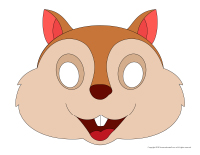
Cut several squirrel pictures and illustrations out of magazines, old books, etc. Glue them on 10 cm x 13 cm paper. Arrange sets of two pictures (placed back to back) in sandwich Ziploc bags. Staple all the bags together at the sealed end so that you are able to open the bags if necessary. Use colourful adhesive tape to cover the staples and complete your picture book.
COLORING PAGES
(Open coloring pages theme-Squirrels) Print for each child. Different ways to use coloring pages
Identical coloring-Squirrels
Print a coloring page for each child and another copy that you will use to create a model. Color only certain parts of your model. Present the model to your group and invite them to reproduce it by coloring the same sections with the same colors.
Coloring binder-Squirrels
Laminate several coloring pages and arrange them in a binder. Provide dry-erase markers. Set everything on a table for children to use during free play.
Musical drawing-Squirrels
Give each child a coloring page. Have them sit around a table. When the music starts, children pass the coloring pages around the table. When the music stops, they begin coloring the page they have in their hands. When the music starts again, the coloring pages resume travelling around the table and so on.
Homemade puzzles-Squirrels
Give each child a coloring page. When they are done coloring, cut the coloring pages into pieces to create simple puzzles.
SONGS & RHYMES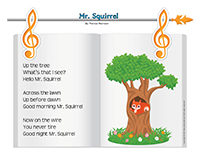
(Open songs & rhymes-Squirrels)
By: Patricia Morrison
Mr. Squirrel
Up the tree
What's that I see?
Hello Mr. Squirrel
Across the lawn
Up before dawn
Good morning Mr. Squirrel
Now on the wire
You never tire
Good night Mr. Squirrel
Have fun
The Educatal team
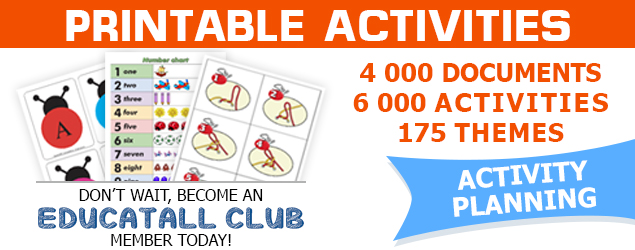
 Home
Home Theme activities
Theme activities
 Babies and toddlers
Babies and toddlers
 Arts and crafts
Arts and crafts
 Science
Science
 Creative recipes
Creative recipes
 Tips and tricks
Tips and tricks
 Special needs
Special needs
 Extra activities
Extra activities
 Educ-TV
Educ-TV
 Newsletter
Newsletter  Online store
Online store Educatall club
Educatall club

